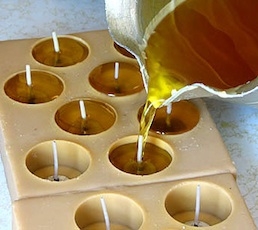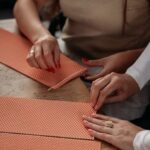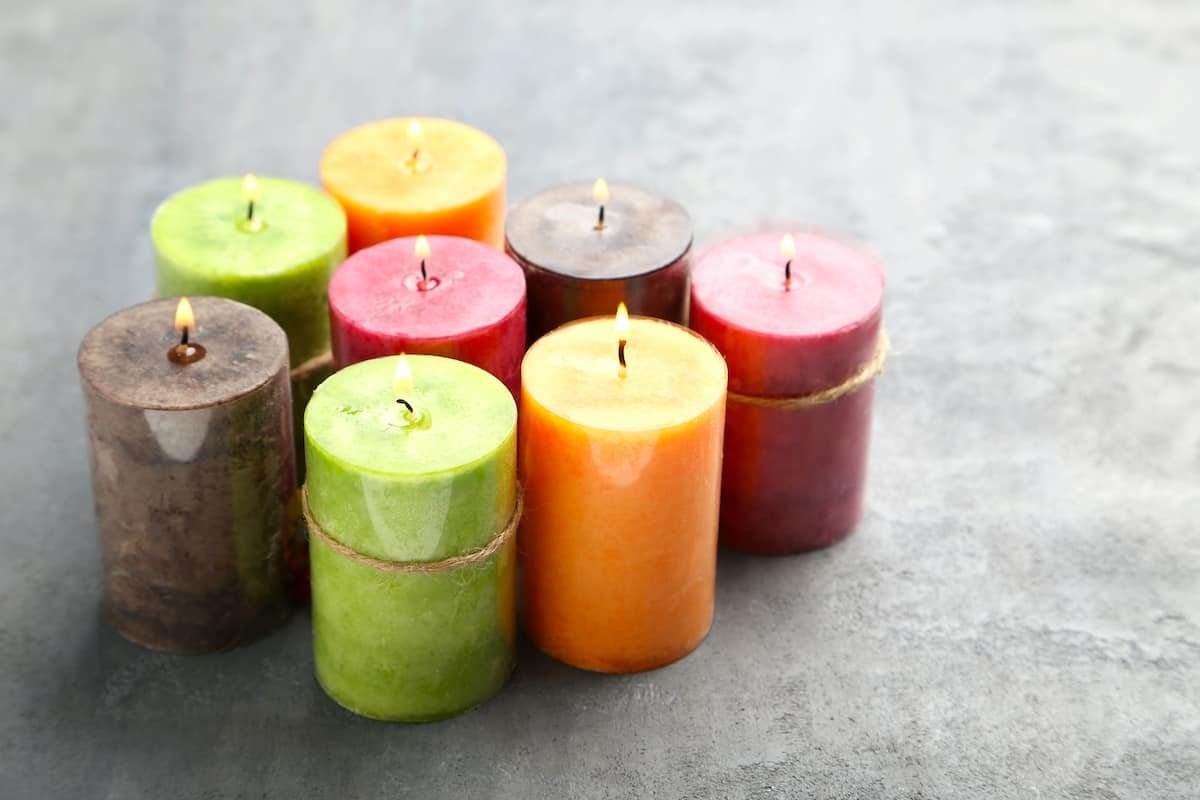Candle making is both a craft and an art form that has been practiced for centuries. Whether for personal use or as a business venture, creating beautiful and unique candles can be a rewarding experience.
One crucial aspect of candle making is using the right candle mold making material to ensure the quality and success of your creations. The selection of the appropriate mold making material, such as silicone, polyurethane, or latex, plays a significant role in determining the outcome of your candle designs.
When it comes to candle making, the choice of mold making material can make all the difference. Using high-quality materials not only ensures better-looking candles but also affects how long-lasting and functional they will be. In this article, we will explore the importance of using quality candle mold making material and discuss the different types available in the market.
Additionally, we will delve into considerations when choosing candle mold making material such as durability, flexibility, and cost to help you make informed decisions. Furthermore, we will provide a step-by-step guide on how to use candle mold making material effectively and offer some top tips for successful candle mold making.
Whether you are a novice or an experienced candle maker, understanding these essential components will greatly enhance your candle crafting skills. Let’s embark on this journey to unleash the endless possibilities of candle making with just the right mold making material.
The Importance of Using Quality Candle Mold Making Material
Benefits of Quality Candle Mold Making Material
Using quality candle mold making material is essential for creating long-lasting and well-defined candles. High-quality materials such as silicone, polyurethane, and latex offer superior durability, flexibility, and detail retention compared to lower-grade options. Quality mold making material can also withstand multiple uses without degradation, allowing for the creation of numerous high-quality candles.
Enhanced Design Options
Quality candle mold making material opens up a world of design possibilities for candle makers. Silicone, polyurethane, and latex molds can capture intricate details and textures to produce unique and visually appealing candles. With the right materials, candle makers can replicate the look of natural elements or create custom shapes that stand out from generic mass-produced candles.
Long-Term Cost Savings
Investing in quality candle mold making material may initially seem more expensive than opting for lower-quality alternatives. However, in the long run, using durable and reliable materials can lead to cost savings.
High-quality molds are reusable and can withstand frequent use over an extended period, ultimately reducing the need for frequent replacements. Additionally, the level of detail and precision achieved with quality materials can result in higher market value for finished candles, making them a worthwhile investment for professional candle makers.
Types of Candle Mold Making Material
When it comes to making candle molds, the choice of material is crucial to the success of your project. There are several options available in the market, but three of the most popular choices are silicone, polyurethane, and latex. Each material has its own unique properties and benefits that make it suitable for different types of candle making.
Silicone
Silicone is a versatile and durable material that is often preferred by candle makers for its flexibility and ease of use. It is resistant to heat and can withstand multiple uses without losing its shape or quality. Silicone molds are also known for their ability to capture intricate details, making them an ideal choice for creating complex candle designs.
Polyurethane
Polyurethane is another popular choice for candle mold making due to its high level of durability and resistance to chemicals. This material produces sturdy molds that can be used repeatedly without losing their shape or texture. Polyurethane molds are often favored for their ability to produce consistent results and for their cost-effectiveness in the long run.
Latex
Latex has been a traditional choice for candle mold making due to its natural rubber properties. While it may not be as durable as silicone or polyurethane, latex molds are known for their flexibility and stretchability, allowing for easy demolding of candles. The elasticity of latex also makes it suitable for creating tapered or irregularly shaped candles.
In choosing the right material for your candle mold making, consider factors such as the intricacy of your designs, the number of uses you require from the mold, and your budget. Each type of material offers its own advantages and limitations, so it’s important to weigh these factors before making your decision on which material to use in creating your candle molds.
Considerations When Choosing Candle Mold Making Material
When it comes to choosing the right candle mold making material, there are several important considerations to keep in mind. The three main factors to consider are durability, flexibility, and cost. Each of these factors plays a crucial role in determining the quality and success of your candle making process.
Durability is a key consideration when selecting candle mold making material. This refers to the ability of the material to withstand repeated use without deteriorating or losing its shape. Silicone, polyurethane, and latex are popular options for candle mold making due to their durability. These materials are known for their long-lasting properties, making them ideal for creating multiple batches of candles without the need for frequent replacements.
Flexibility is another important factor to consider when choosing candle mold making material. A flexible mold allows for easy removal of the finished candle without causing any damage to the mold or the candle itself. Silicone molds, in particular, are valued for their flexibility, allowing for effortless demolding and ensuring that the intricate details of the candle design remain intact.
Cost is also a significant consideration when selecting candle mold making material. While it’s important to invest in high-quality materials that will produce professional results, it’s equally important to consider cost-effective options that align with your budget. Silicone molds may be initially more expensive than other materials, but their longevity and reusability make them a cost-effective choice in the long run.
By carefully considering the durability, flexibility, and cost of different types of candle mold making materials, you can ensure that you choose the best option for your specific needs and budget.
Step-by-Step Guide to Using Candle Mold Making Material
When it comes to creating your own candles, using the right candle mold making material is essential in achieving the perfect shape and texture. The process of using candle mold making material may seem daunting at first, but with the right guidance, it can be a rewarding and enjoyable experience.
First, you will need to choose the type of candle mold making material that best suits your needs. Silicone, polyurethane, and latex are the most common options available. Silicone molds are known for their durability and flexibility, making them ideal for detailed designs. Polyurethane molds are also durable and provide excellent detail replication. Latex molds are known for their elasticity and ability to capture intricate designs.
Once you have chosen your candle mold making material, it’s important to prepare it for use. This typically involves applying a release agent to ensure easy removal of the finished candle. Make sure to follow the manufacturer’s instructions for preparing the mold before pouring in the melted wax.
Next, carefully pour the melted wax into the prepared mold. Take care not to overfill the mold, as this can lead to spillage and an uneven finish. Once filled, allow the wax to cool and solidify according to the recommended time frame.
Using candle mold making material requires patience and attention to detail, but with practice, you can create beautiful and unique candles that far surpass store-bought options.
| Types of Candle Mold Making Material | Characteristics |
|---|---|
| Silicone | Durable and flexible; ideal for detailed designs |
| Polyurethane | Durable with excellent detail replication |
| Latex | Elasticity; captures intricate designs |
Top Tips for Successful Candle Mold Making
When it comes to successful candle mold making, there are a few tips and tricks that can make the process smoother and more effective. Whether you are a beginner or experienced candle maker, these tips will help you achieve the best results with your candle mold making material.
Top Tips for Successful Candle Mold Making
1. Choose the Right Material: The success of your candle mold making largely depends on the type of material you choose. Silicone, polyurethane, and latex are all popular choices for candle mold making material. Consider the specific qualities of each material, such as durability, flexibility, and cost, before making your decision.
2. Proper Mixing and Application: When working with your chosen candle mold making material, it’s crucial to follow the instructions for mixing and applying the material accurately. Improper mixing or application can result in weak or flawed molds.
3. Consider Undercuts: If you’re creating a complex candle design, consider any undercuts that may make removing the finished candle from the mold difficult. Using a release agent or creating a multi-piece mold can help address this issue effectively.
4. Attention to Detail: Pay close attention to detail during the mold making process. Any imperfections in the mold can transfer to your finished candles. Take your time to ensure that the mold is smooth and free of any flaws before using it for candle making.
5. Experiment and Learn: Don’t be afraid to experiment with different techniques and materials when it comes to candle mold making. Every batch of candles provides an opportunity to learn something new and improve your skills.
By following these top tips for successful candle mold making, you can create high-quality candles with professional-looking designs that will impress customers and friends alike.
Troubleshooting Common Issues With Candle Mold Making Material
When working with candle mold making material, it’s important to be aware of the potential issues that may arise during the process. Troubleshooting common problems can help ensure that your candle making endeavors are successful. Here are some tips for addressing issues with candle mold making material:
1. Air Bubbles: One common issue when using silicone or polyurethane mold making material is the formation of air bubbles in the mold. These air bubbles can result in imperfections on the surface of the candle. To prevent this problem, make sure to mix the mold making material thoroughly and slowly pour it into the mold to minimize air entrapment. Alternatively, you can use a vacuum chamber to remove any air bubbles from the mixture before pouring.
2. Uneven Curing: Silicone and polyurethane mold making material can sometimes cure unevenly, leading to areas of soft or tacky spots on the finished mold. To address this issue, try increasing the curing time and temperature according to the manufacturer’s recommendations. You can also use a heat gun to carefully heat and cure any problem areas after demolding.
3. Tearing or Distortion: If you’re experiencing tearing or distortion in your candle molds, it may be due to using a material that isn’t flexible enough for intricate designs or undercuts. Consider switching to a more flexible mold making material such as silicone, which can easily capture complex shapes without tearing or distorting during demolding.
By being mindful of these potential issues and employing these troubleshooting techniques, you can overcome common challenges when working with candle mold making material and achieve high-quality results in your candle making projects.
Remembering neatness in such processes really comes down to discreet preparation activities like conditioning your work environment as well as wearing appropriate temperatures-appropriate attires while handling wax forms i.e donning hand gloves among other precautionary measures while heating wax materials especially where firing temperatures are involved is crucial.
Conclusion
In conclusion, the art of candle making is a versatile and creative endeavor that offers endless possibilities for both beginners and experienced crafters. The key to successful candle making lies in using high-quality candle mold making material, such as silicone, polyurethane, or latex. These materials provide durability, flexibility, and cost-effectiveness, allowing for a wide range of shapes and designs to be created.
By carefully considering the important factors when choosing a candle mold making material, such as the type of wax being used and the desired intricacy of the design, crafters can ensure successful outcomes with their candle making projects. Following a step-by-step guide and top tips for using candle mold making material can further enhance the overall experience and results.
Despite potential challenges that may arise in the process, troubleshooting common issues with candle mold making material can be easily overcome. With patience and perseverance, crafters can achieve their desired results and create beautiful candles that reflect their creativity and style.
Ultimately, the right mold making material opens up new doors for innovative designs and techniques in the art of candle making. Whether creating personalized gifts or starting a small business venture, the possibilities are truly limitless with quality candle mold making material at hand.
Frequently Asked Questions
What Is the Best Material to Make Candle Molds Out Of?
The best material to make candle molds out of is silicone. Silicone molds are durable, flexible, and easy to release the finished candles from. They can withstand high temperatures and are reusable, making them a popular choice for candle making.
What Do You Need to Make a Candle Mold?
To make a candle mold, you will need a mold container or shape, mold sealer or hot glue, wick pins or cotton wicks, mold release spray or vegetable oil, and of course, the wax for the candles. Depending on the type of mold you are making, additional materials may be needed.
What Are Candle Molds Made Of?
Candle molds can be made of various materials such as silicone, metal, plastic, and rubber. Silicone molds are popular due to their flexibility and durability. Metal molds are also used but may require additional steps for releasing the candles. Plastic and rubber molds are less common but can still be used for candle making projects.

Welcome to my candle making blog! In this blog, I will be sharing my tips and tricks for making candles. I will also be sharing some of my favorite recipes.





